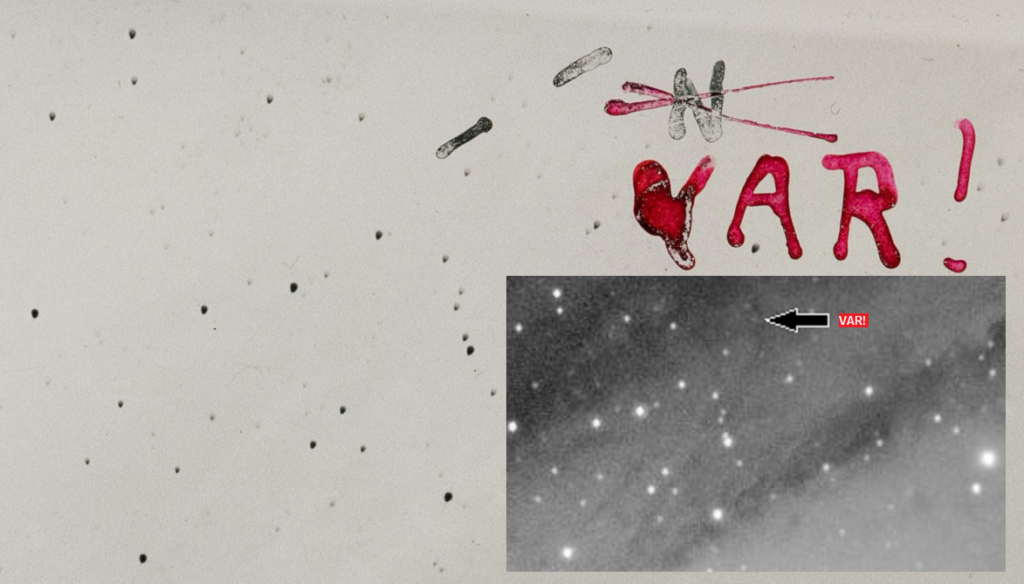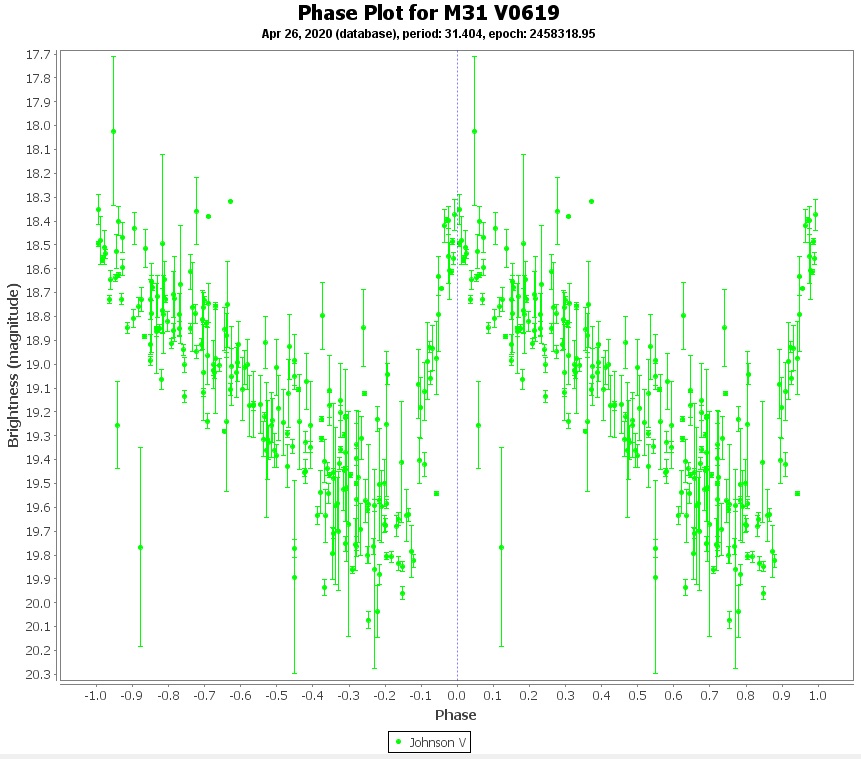Recreating Edwin Hubble’s discovery of a Variable Star in the Andromeda Galaxy
On October 6, 1923 renowned astronomer Edwin Hubble discovered a pulsating star in the Andromeda Galaxy which quickly led to the revolutionary discovery that M31 is a galaxy unto itself 2.5 million light-years away, and not a gaseous cloud of stars within our own Milky Way.
I dipped into my archive of astro images to see if I might have captured that same variable star. I did! In the attached image I’ve overlaid a small region of a 6-panel mosaic I made last year, atop Hubble’s photographic plate he captured with the 100-inch telescope at Mount Wilson Observatory. You can see that the pattern of stars matches nicely. At the point of the arrow that I marked “VAR!” you will see an equilateral triangle of faint stars. You can see that it matches up with Hubble’s. That one star at the vertex of the triangle is the famous variable star.
My image is a stack of 21x 90-second luminance frames captured with a cooled Atik 314E CCD and William Optics 71mm f/5.9 refractor under Bortle 5 skies. Total integration time is 31.5 minutes. I know nothing of the period of this variable star. Being a Cepheid type variable star its period is most likely one or more days in length, so integrating for 31.5 minutes is not a problem. The bigger question is, am I seeing it at minimum light or maximum light? I almost don’t want to know. I want to feel the same sense of discovery as Hubble did.
EDIT: I suspect that this variable star is likely to have a long period perhaps months long. I suspect this because of the “period-luminosity relationship” which says that highly luminous Cepheids have long periods. This star must be highly luminous if I can see it as a point source from such a great distance. If it was less luminous it would be lost in the glow of the galactic arms.
I will make this one of my top priority projects this Fall: measure the period of the variable star, and then calculate its distance using Leavitt’s Law.
https://apod.nasa.gov/apod/ap200426.html
https://apod.nasa.gov/apod/ap950701.html
https://astrotuna.com/andromeda-galaxy-mosaic-as-of-2019-08-12/

AAVSO’s official designation is M31 V0619. They report that its magnitude fluctuates between 18.5 and 19.8V. That is faint. I’ve known that my scope/cam can see down to 18th magnitude at my Bortle 5 site but can it see down to 19th magnitude? What makes things worse is that the star is embedded in the glow of a spiral arm which further reduces the signal-to-noise ratio. There is only one way to tell. Do it!
I was curious as to what phase the star was in when I captured my image. According to the AAVSO’s Ephemeris it reached maximum light on July 31, 2019 07:08 UTC. My image was captured August 3, 2019 02:00 UTC. So, three days after maximum light. That pretty much puts it at magnitude 18.5.
Here is the Phase Plot contributed by ten AAVSO members between 2010 and 2019. Ignore the outliers.
